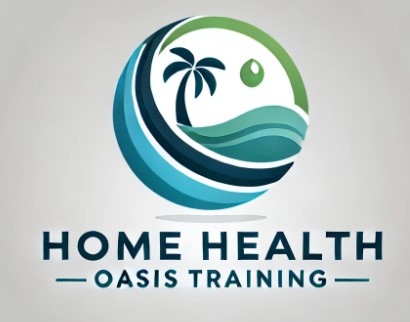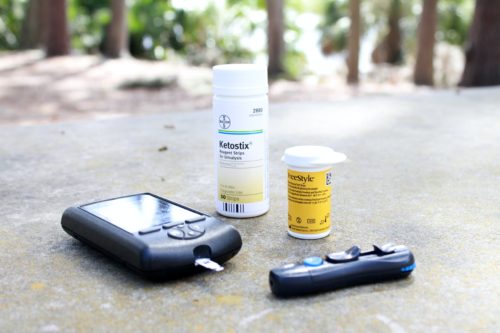Documentation Strategies for Improving Patient Outcomes in Home Health
Home healthcare is an essential component of the medical system, providing care for patients in their homes rather than in clinical or hospital settings. As more people with chronic conditions, disabilities, or post-acute recovery needs are opting for home health care, it is vital that these services are of the highest quality. One of the key ways to ensure that home health care is effective and leads to improved patient outcomes is through meticulous and strategic documentation. In this blog, we’ll explore how effective documentation strategies can directly impact care planning, patient engagement, and overall health outcomes for patients in home health settings.
The Importance of Documentation in Home Health Care
Documentation in healthcare is a critical component of patient care. In the context of home health, documentation serves several key purposes:
-
Patient History and Assessment: Thorough documentation allows healthcare providers to understand a patient’s medical history, current conditions, and needs. This is vital for creating a comprehensive care plan that addresses both immediate and long-term health goals.
-
Communication Among Care Providers: Home health often involves multiple caregivers, such as nurses, physical therapists, and aides. Proper documentation ensures that everyone is on the same page and can deliver coordinated care.
-
Legal and Regulatory Requirements: Proper documentation helps home health agencies stay compliant with healthcare regulations and ensures that they meet the standards required for reimbursement by Medicare, Medicaid, and other insurers.
-
Tracking Progress: By documenting interventions, treatments, and patient responses, healthcare providers can track patient progress and adjust care plans as needed to improve outcomes.
Effective documentation goes beyond simply recording medical facts; it can be leveraged as a tool to improve the patient experience, quality of care, and health outcomes.
Care Planning: Building a Comprehensive and Personalized Approach
Care planning is a dynamic and ongoing process in home health care, where clinicians create an individualized plan to address the specific needs of a patient. Care plans must be based on detailed, accurate, and up-to-date documentation. A clear and organized record of a patient’s health condition, lifestyle, preferences, and goals ensures that the care provided is tailored to their unique needs.
1. Identifying Key Health Concerns
When clinicians document a patient’s current health status, including any chronic conditions, comorbidities, medications, allergies, and medical history, they can quickly identify critical health issues that need to be addressed in the care plan. This documentation becomes a foundation for decisions related to treatments, services, and goals.
For instance, if a patient has diabetes and hypertension, the documentation should include the details of their blood sugar and blood pressure levels. This allows home health providers to focus on the management of these conditions, creating actionable goals and intervention strategies to improve overall health outcomes.
2. Setting Realistic and Measurable Goals
Detailed documentation also enables healthcare professionals to set realistic, specific, and measurable goals. Each patient’s care plan can include goals based on their particular conditions, with outcomes that are easily tracked and adjusted if necessary.
For example, if a patient is recovering from surgery and their mobility is limited, a goal could be to increase their walking distance by 100 feet each week. Accurate documentation of baseline data allows the clinician to monitor progress over time and make adjustments to the plan as needed.
3. Adapting Care Plans Over Time
Patient conditions evolve, and documentation ensures that care plans remain flexible and adaptable. Changes in a patient’s health status or new concerns can be identified through ongoing documentation, and the care plan can be modified accordingly.
This adaptability is particularly important in home health, where conditions may change rapidly due to aging, injury, or worsening chronic diseases. Regular assessments and updates to documentation allow care providers to stay proactive in addressing these shifts.
4. Streamlining Multidisciplinary Care
In home health care, patients often receive services from a range of professionals, including physical therapists, occupational therapists, nurses, and social workers. Effective documentation provides a central point for coordinating these various services. By documenting each professional’s input, progress, and plans, the entire care team is aligned in their approach.
Care plans that are updated consistently and thoroughly can also ensure that the right resources are allocated at the right time, improving efficiency and reducing the risk of care gaps.
Patient Engagement: Empowering Patients Through Information and Communication
Effective documentation doesn’t just benefit healthcare providers—it can also empower patients to take an active role in their care. Engaging patients in their health journey is critical for improving outcomes, and good documentation is key to this engagement.
1. Building Trust and Transparency
When patients have access to documentation that clearly explains their health status, treatment options, and care plans, it can help build trust between them and their care providers. Transparency regarding their condition, goals, and progress encourages patients to take ownership of their health.
For instance, a patient who understands that their goal is to reduce high blood pressure through medication and lifestyle changes is more likely to engage in daily activities that promote heart health. Detailed and accessible documentation allows patients to see where they are in their treatment process, which can motivate them to stay committed to their health goals.
2. Personalized Communication
Patients often feel more involved in their care when they see that their healthcare providers are aware of their preferences and concerns. Detailed documentation of patient preferences—such as communication style, preferred treatment options, and the family’s role in care—allows for more personalized interactions.
A nurse who documents the patient’s preference for verbal explanations rather than written materials can tailor their communication approach. Similarly, documenting a family member’s involvement in the patient’s care can help coordinate services and provide additional support when needed.
3. Patient Education and Awareness
A critical element of patient engagement is education. Documentation can be a powerful tool for supporting patient education by providing a detailed record of health information that can be shared with patients and their families.
For example, documentation of a patient’s diet plan, exercise regimen, and medication schedule can be used in education sessions to help patients better understand how to manage their conditions. When patients are informed about the specifics of their care, they are more likely to adhere to treatment plans, leading to better health outcomes.
4. Encouraging Collaboration
Documentation not only empowers patients but also facilitates collaboration between patients, family members, and healthcare providers. By documenting key conversations, progress, and goals, care providers can ensure that everyone is working together toward shared health objectives.
For example, if a patient is receiving home health services and is also seeing a specialist for a chronic condition, documentation allows both the home health team and the specialist to coordinate their efforts. This holistic approach to care can result in better outcomes by ensuring consistency and avoiding contradictory treatments.
Improving Health Outcomes: Tracking and Responding to Patient Needs
Ultimately, the goal of home healthcare is to improve patient outcomes, and documentation plays a key role in achieving that. Accurate, timely, and comprehensive records can help caregivers track progress, make data-driven decisions, and respond quickly to changes in a patient’s condition.
1. Monitoring Patient Progress
By documenting patient assessments, interventions, and responses, caregivers can assess whether the care plan is working or needs adjustments. This ongoing monitoring allows healthcare providers to stay responsive to the patient’s evolving needs.
For instance, if a patient is prescribed a new medication and the documentation shows that they are experiencing adverse side effects, healthcare providers can take immediate action to adjust the treatment plan. Timely documentation helps prevent complications and ensures that any issues are addressed promptly.
2. Identifying Early Warning Signs
Proper documentation can also help identify early warning signs of deterioration in a patient’s condition. With consistent and detailed records, healthcare providers can notice trends or subtle changes that may indicate a decline in health, such as weight loss, changes in vital signs, or decreased mobility.
For example, if a patient with diabetes is consistently experiencing fluctuating blood sugar levels, documentation can prompt healthcare providers to reassess the medication regimen or consider other interventions before the patient’s condition worsens.
3. Improving Clinical Decision-Making
Documentation provides valuable data that can inform clinical decision-making. By reviewing a patient’s history, progress notes, and test results, clinicians can make more informed decisions about treatment options, care plans, and goals. This data-driven approach increases the likelihood of achieving better outcomes.
For instance, if a patient has a history of falls, documentation of previous falls can help clinicians adjust the home environment or implement safety measures to reduce the risk of future falls.
4. Facilitating Outcomes Measurement and Reporting
Many home health agencies are required to report patient outcomes to regulators and insurers. Documentation is the foundation for measuring and reporting these outcomes, which can impact reimbursement and quality ratings. Accurate documentation helps agencies demonstrate their effectiveness in improving patient outcomes, which can lead to better funding and support for their services.
Conclusion
In home health, careful and strategic documentation is not just a compliance necessity—it is a powerful tool for improving patient outcomes. Through comprehensive care planning, enhanced patient engagement, and proactive tracking of health status and progress, documentation can elevate the quality of care provided to patients in their homes.
By fostering communication, empowering patients, and enabling real-time adjustments to care, home health agencies can ensure that their patients receive the best possible care. In an era of increasing focus on patient-centered care and value-based outcomes, leveraging documentation strategies can have a direct and lasting impact on improving the lives of those who rely on home health services.
Editor's Pick
Leave A Comment
Related Posts
- Published On: June 2, 2024
Transition from OASIS-E to OASIS-E1: Key Changes and Implications for […]
- Published On: May 28, 2024
Importance of Clinical Narrative and Nurse Teachings while Documenting Home Health OASIS Assessments
Importance of Clinical Narrative and Nurse Teachings while Documenting Home […]
- Published On: April 29, 2025
Navigating the Complexities of Medicare and Medicaid Reimbursement for Home […]
- Published On: April 27, 2025
Engaging Your Team Around the IPR: Turning Data into Motivation […]
- Published On: April 27, 2025
Engaging Your Team Around the IPR: Turning Data into Motivation […]

